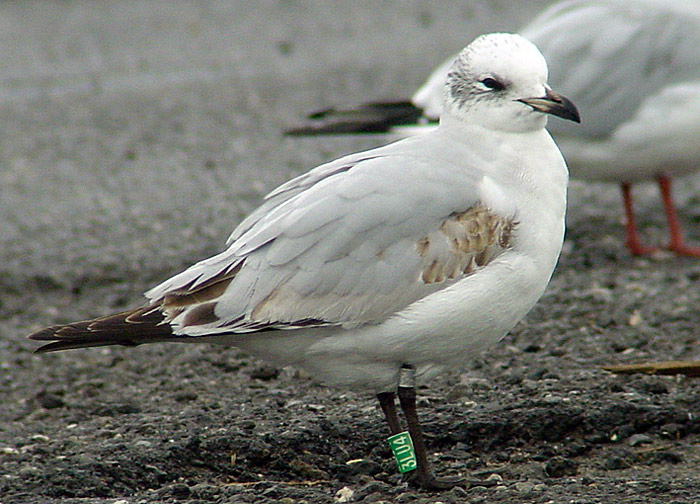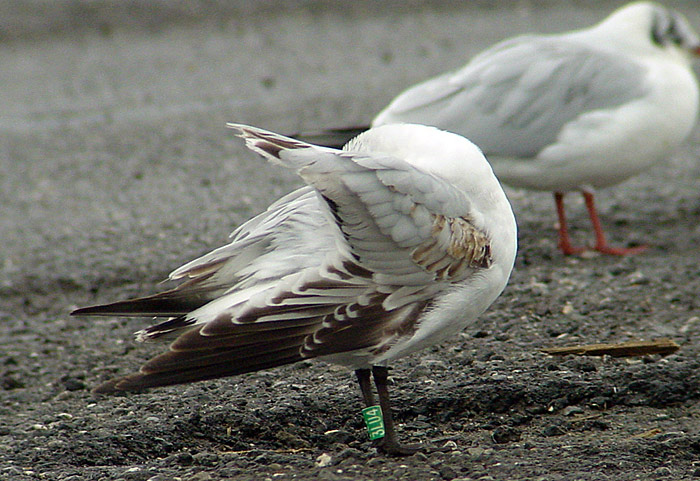 Mediterranean Gull (L. melanocephalus)
Mediterranean Gull (L. melanocephalus)
(last update:
Mediterranean Gull 2cy 3LU4, February 07 2003, Boulogne-sur-Mer, France (50.42N,1.34E).This individual was ringed as a pullus in Belgium on May 26 2002, Green left 3LU4. The post-juvenile moult is a partial moult into so-called "first winter" plumage that starts as soon as the birds leave their colonies in July and finishes by late September. This moult includes the head and body feathers, mantle, scapulars and a variable number of wing coverts. The head and under-parts become almost completely white, with a dark mask of variable size and intensity behind the eye extending as very narrow streaks over the nape. The eye-crescents are white and the dark smudge in front of the eye contrasts more than in full juvenile plumage. The second generation wing-coverts, mantle and scapular feathers are plain pale grey. The brown centres of the juvenile wing-covert centres bleach to a foxy brown and the white fringes quickly wear away. The base of the bill starts to turn paler and the legs usually turn slightly paler as well.
In this eight month old individual the innermost two greater and a large number of median and lesser coverts have been replaced by plain grey second generation feathers. All but the upper tertial are retained juvenile feathers and show extensive wear by February, contrasting with grey second generation scapulars. The greater coverts have worn to the point that you can see the tips of the dark secondaries. The primaries on this bird look particularly tatty. The base of the bill has turned pale, the legs have remained dark, but on some birds these are distinctly paler.
The same bird preening its underwingcoverts. In an open wing pose such as this, it is much easier to judge the extent of covert moult. More than half of the median and lower lesser coverts have been renewed, as usual from the innermost outward. Also note that all juvenile primaries and primary coverts are still present. Just a few of the upper lesser coverts are visible in this shot, these are always the darkest on a bird this age since they have been more protected from wear and bleaching by the sun. |

